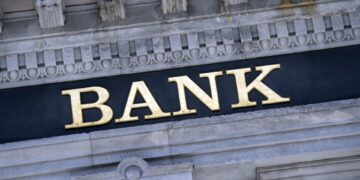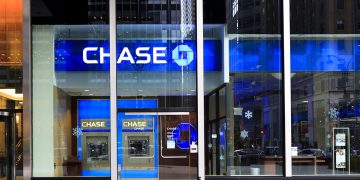The COVID-19 pandemic has affected millions of Americans financially. In a survey by the National Endowment for Financial Education (NEFE), three in 10 Americans said paying off debt is their top financial stressor, while 55% were worried about having enough cash tucked away in savings. While the federal government has introduced numerous measures to provide coronavirus relief, banks are also stepping up to help customers in a variety of ways.
Key Takeaways
- Many banks have programs to help customers affected by the COVID-19 pandemic and its economic fallout.
- For example, customers may be eligible for fee waivers on bank accounts, interest rate reductions on credit cards, and deferred payments on loans.
- Getting help from your bank isn’t necessarily automatic. You’ll probably need to apply.
- Before signing up, be sure to ask whether any fees or interest charges that are waived now will be applied retroactively later.
COVID-19 Relief and Bank Accounts
Two of the biggest issues that banks are addressing with COVID-19 relief are access to funds and the impact of fees. Social distancing requirements have changed the way many brick-and-mortar banks operate. As a result, they have encouraged customers to use online and mobile banking tools as well as ATM locations as much as possible. While branches are open, they may have limited hours or limited capacity and require appointments beforehand.
Banks are also taking a closer look at the impact of fees on customers’ financial health during this time. To ease some of the financial strain, banks may be offering COVID-19 fee waivers that cover a range of fees, including:
- Overdraft and nonsufficient funds (NSF) fees
- ATM fees, including foreign ATM fees
- Early withdrawal penalties for CDs
- Excess withdrawal penalties for savings accounts
In April 2020, the Federal Reserve introduced an interim rule to eliminate the six-per-month limit on so-called convenient transfers from savings accounts provided for under Regulation D. But that change didn’t require banks to stop charging excess withdrawal fees to customers who went over the six transaction limit. Some banks have, however, chosen to do so. Ally Bank, for example, will refund any excess transaction fees to customers who go over the limit.
Banks are also helping customers who receive a stimulus check hold on to more of their money. A number of the biggest banks, including Wells Fargo and Citi, said they would not apply stimulus funds toward any negative balances in customer accounts, according to American Banker. So if you’re scheduled to receive any stimulus payments via direct deposit and your account is overdrawn, you wouldn’t be penalized.
Note
Fee waivers may not extend to regular monthly maintenance fees that apply to checking, savings, or money market accounts.
COVID-19 Relief and Bank Loans
If you have a mortgage through your bank, you may already by covered by federal coronavirus relief. The federal CARES Act made it possible for homeowners with eligible home loans to apply for temporary mortgage forbearance. The new law also introduced a temporary moratorium on foreclosures for Fannie Mae, Freddie Mac, VA, FHA, and USDA loans.
Banks are also offering programs to help make mortgages, as well as other types of loans, more manageable during the pandemic. At many financial institutions, this relief takes the form of payment deferrals and fee waivers. Depending on the bank, the types of loans that may be covered include:
- Mortgage loans
- Refinance loans
- Home equity loans
- Auto loans
- Personal loans
- Lines of credit
- Business loans
Approval for loan payment deferral isn’t automatic, and banks may have eligibility requirements that borrowers need to meet. The length of time that payments can be deferred may also vary from bank to bank. Note that your payments may be restructured to account for the ones you missed during a deferral or forbearance period. You could also be responsible for making a balloon payment at the end of the loan term, so it’s important to find out before applying.
Tip
If you’re taking advantage of COVID-19 loan deferral, be sure to ask whether interest will continue to accrue during that period and what charges you could be responsible for once payments resume.
COVID-19 Relief for Private Student Loans
The federal government has extended coronavirus student loan relief through Sept. 30, 2021, for eligible borrowers. That program, which allows borrowers to defer payments and drops interest rates to 0%, applies to most federal student loans. Private student loans are not covered by these measures, however.
While banks that offer private student loans aren’t required to follow the federal program, some have introduced similar initiatives to help borrowers. Citizens Bank, for example, has waived late fees and offered a short-term emergency forbearance program to those affected by the pandemic. Discover Bank also has a number of programs, including forbearance and hardship payment reductions, for borrowers who are having financial difficulties.
COVID-19 Credit Card Relief
Credit card holders who have taken a financial hit during the pandemic may get some relief from their banks. Depending on your bank or card issuer, you could be eligible for any of the following:
- Minimum payment waivers or reductions
- Late fee waivers or refunds
- Interest rate reductions
- Hardship payment plans
Any of these options could make managing your credit card debt during the pandemic easier. Of course, even during this difficult period, it’s important to keep up with loan and credit card payments to minimize potentially negative impacts to your credit score. A single late payment could cost you significant points, making it more difficult to borrow money down the line, especially at favorable interest rates.
Important
When entering into a credit card hardship program, be sure to get the terms in writing from your bank or credit card company and check your credit reports regularly for errors.
How to Get COVID-19 Relief From Your Bank
The simplest way to get help from your bank if you’re struggling because of the coronavirus pandemic is to ask. Many banks have set up pages on their websites that list their COVID-19 relief programs, who’s eligible, and how to apply. Some encourage you to apply for aid online, since telephone customer service wait times may be unusually high.
If you’ve reached out to your bank and it isn’t offering much help, you might consider switching to a different bank. In that case, shop around for the best interest rates, most reasonable fees, and (for now) COVID-19 relief programs. Investopedia publishes regularly updated lists of the best bank accounts for people with different needs, such as the best checking accounts with no ATM fees and the best high-yield savings accounts.








